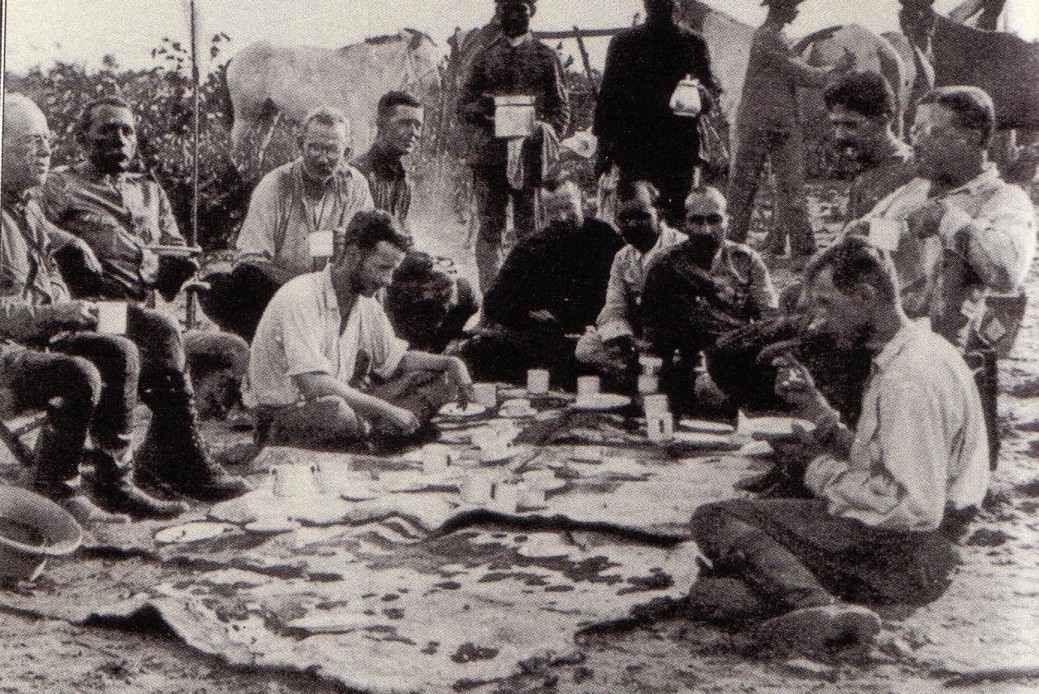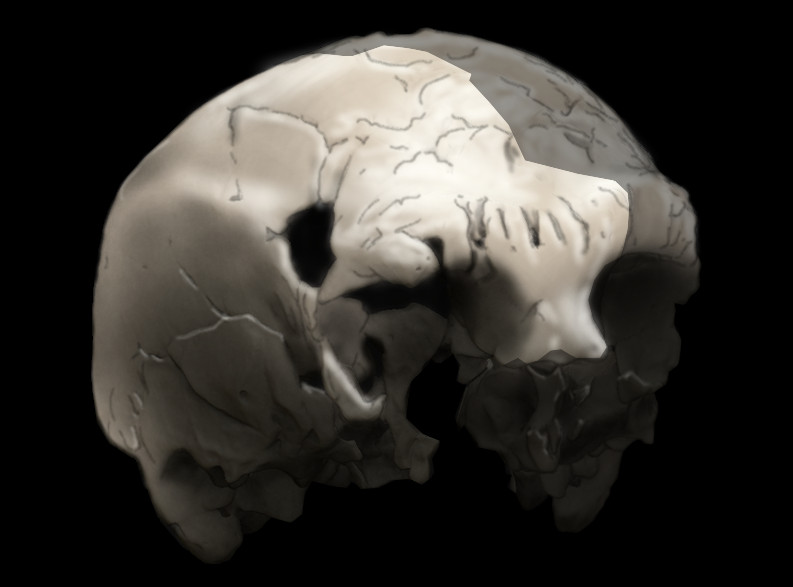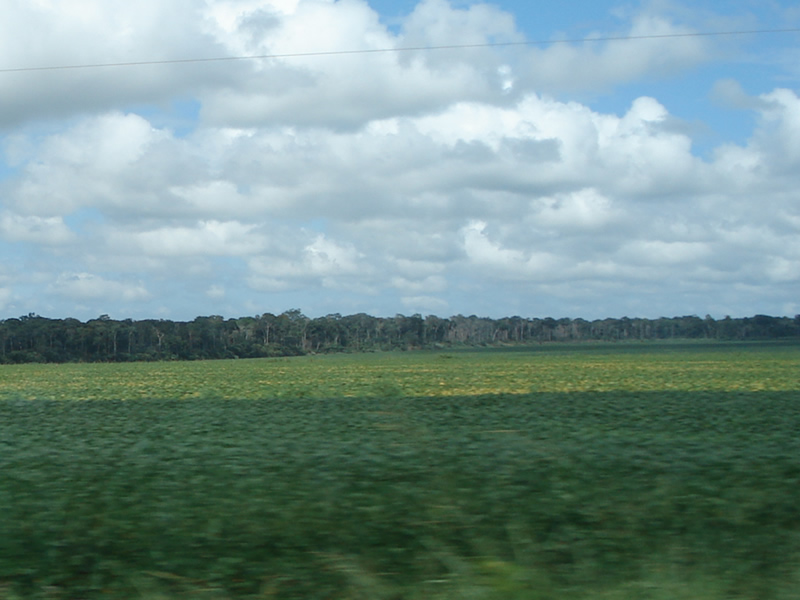|
Cândido Rondon
Marshal Cândido Mariano da Silva Rondon (5 May 1865 – 19 January 1958) was a Brazilian military officer most famous for his telegraph commission and exploration of Mato Grosso and the western Amazon basin, as well as his lifelong support for Indigenous Brazilians. He was the first director of Brazil's Indian Protection Service or SPI (later FUNAI) and supported the creation of the Xingu National Park. The Brazilian state of Rondônia is named after him. Biography Early life Cândido Mariano da Silva was born on 5 May 1865 in Mimoso, a small village in the state of Mato Grosso. His father, Cândido Mariano da Silva Sr., was of Portuguese, Spanish, and Guaná (an Indigenous group) ancestry, and died of smallpox in 1864, prior to Rondon's birth. His mother, Claudina Freitas Evangelista, was descended from the Terena and Bororo peoples. She died two years after giving birth to Rondon. He was raised by his grandparents until their death, and then by his uncle, Manuel Rodrig ... [...More Info...] [...Related Items...] OR: [Wikipedia] [Google] [Baidu] |
Santo Antônio Do Leverger
Santo ('saint' in various languages) may refer to: People * Santo (given name) * Santo (surname) * El Santo, Rodolfo Guzmán Huerta (1917–1984), Mexican wrestler and actor * Bob Santo or Santo, stage name of Ghanaian comedian John Evans Kwadwo Bosompem (1940–2002) * Ferdinand III of Castile (1200–1252) called "''el Santo''" ("the Saint") Places * Santo, Ouest, Haiti, a village * Santō, Shiga, Japan, a town *Santo, Texas, United States, an unincorporated community *Basilica of Saint Anthony of Padua, Italy, known locally as ''il Santo'' *Espiritu Santo, the largest island of Vanuatu, nicknamed Santo **Luganville, known locally as Santo Arts and entertainment *Santo (art), a wooden or ivory statue depicting a holy figure * ''Santo'' (EP), by Alonso Brito, 2008 * "Santo" (song), by Christina Aguilera, 2022 *"Santo", a song by Ely Buendia * ''Il Santo'' (novel), Antonio Fogazzaro, 1905 See also * * *Los Santos (other) *Santos (other) *Santa (disambiguat ... [...More Info...] [...Related Items...] OR: [Wikipedia] [Google] [Baidu] |
Amazon Basin
The Amazon basin is the part of South America drained by the Amazon River and its tributary, tributaries. The Amazon drainage basin covers an area of about , or about 35.5 percent of the South American continent. It is located in the countries of Bolivia, Brazil, Colombia, Ecuador, Guyana, Peru, Suriname, and Venezuela, as well as the territory of French Guiana. Most of the basin is covered by the Amazon rainforest, also known as Amazon rainforest, Amazonia. With a area of dense tropical forest, it is the largest rainforest in the world. Geography The Amazon River begins in the Andes, Andes Mountains at the west of the basin with its main tributary the Marañón River and Apurímac River, Apurimac River in Peru. The highest point in the Drainage divide, watershed of the Amazon is the second biggest peak of Yerupajá at . The Amazon River Basin occupies the entire central and eastern area of South America, lying to the east of the Andes mountain range and extending from th ... [...More Info...] [...Related Items...] OR: [Wikipedia] [Google] [Baidu] |
Decline And Fall Of Pedro II Of Brazil
The decline and fall of Pedro II of Brazil took place in the 1880s. It coincided with a period of economic and social stability and progress for the Empire of Brazil, with the nation achieving a prominent place as an emerging power in the international arena. While Pedro II's rule began in 1840, the roots of the collapse of the monarchy can be traced as far back as 1850, when Pedro II's youngest male child died. From that point onward, the emperor himself ceased to believe in the monarchy as a viable form of government for Brazil's future, as his remaining heir was a daughter. Although constitutionally permitted, a female ruler was considered unacceptable by both Pedro II and the ruling circles. This issue was deferred for decades, while the country became more powerful and prosperous. So long as the emperor was in good health, the question of succession could be ignored. From 1881 on, Pedro II's health began to fail, and he gradually withdrew from public affairs. Weary of bei ... [...More Info...] [...Related Items...] OR: [Wikipedia] [Google] [Baidu] |
Bororo
The Bororo are indigenous people of Brazil, living in the state of Mato Grosso. They also extended into Bolivia and the Brazilian state of Goiás. The Western Bororo live around the Jauru and Cabaçal rivers. The Eastern Bororo (Orarimogodoge) live in the region of the São Lourenço River (Mato Grosso), São Lourenço, Garças, and Vermelho River (Mato Grosso), Vermelho Rivers. The Bororo live in eight villages. The Bororo (or even Coroados, Boe, Orarimogodo) are an ethnic group in Brazil that has an estimated population of just under two thousand. They speak the Borôro language (code ISO 639 : BOR) and are mainly of animism, animistic belief. They live in eight villages in the central areas of Mato Grosso. A famous exponent of this group is Cândido Rondon, a Brazilian army official and founder of Fundação Nacional do Índio (or FUNAI). Bororo's culture was closely studied by French anthropologist Claude Lévi-Strauss during his expedition to Amazonia and Mato Grosso (1935– ... [...More Info...] [...Related Items...] OR: [Wikipedia] [Google] [Baidu] |
Terena People
The Terena people are a Brazilian indigenous people that originally inhabited the northeastern region of the Paraguayan Chaco west of the Paraguay River in the mid-19th century. However, they presently reside mainly in the municipalities of Aquidauana and Miranda within the Brazilian state Mato Grosso do Sul, as well as Mato Grosso and São Paulo. This region is generally referred to as the Aquidauana-Miranda region, and geographically lies between 20° and 22° S and 54° and 58° W. The Terena people span numerous indigenous areas including approximately 29 villages. As a result of conflict with colonial powers, the Terena people gradually migrated to their Brazilian territory where they remain today. The Terena are one of four Guaná subgroups that relocated, alongside the Exoaladi, Layana, and the Kinkinau. History Paraguayan War In 1864 the Paraguayan War started, pitting Paraguay against the Triple Alliance, composed of the Brazilian Empire, Uruguay, and Argentina. Th ... [...More Info...] [...Related Items...] OR: [Wikipedia] [Google] [Baidu] |
Smallpox
Smallpox was an infectious disease caused by Variola virus (often called Smallpox virus), which belongs to the genus '' Orthopoxvirus''. The last naturally occurring case was diagnosed in October 1977, and the World Health Organization (WHO) certified the global eradication of the disease in 1980, making smallpox the only human disease to have been eradicated to date. The initial symptoms of the disease included fever and vomiting. This was followed by formation of ulcers in the mouth and a skin rash. Over a number of days, the skin rash turned into the characteristic fluid-filled blisters with a dent in the center. The bumps then scabbed over and fell off, leaving scars. The disease was transmitted from one person to another primarily through prolonged face-to-face contact with an infected person or rarely via contaminated objects. Prevention was achieved mainly through the smallpox vaccine. Once the disease had developed, certain antiviral medications could poten ... [...More Info...] [...Related Items...] OR: [Wikipedia] [Google] [Baidu] |
Chané
Chané is the collective name for the southernmost Arawakan-speaking peoples. They lived in the plains of the northern Gran Chaco and in the foothills of the Andes in Paraguay, Brazil, Bolivia, and Argentina. The historical Chané are divided into two principal groups: the Chané proper who lived in eastern Bolivia, and the Guaná who lived in Paraguay and adjacent Brazil. Twenty-first century survivors of the Chané are the Izoceno people of Bolivia and 3,034 descendants reported in Argentina by the 2010 census. Survivors of the Guaná are the Tereno and the Kinikinao both of Mato Grosso do Sul province in Brazil. Most of the historical Chané were subjects of and absorbed by the Eastern Bolivian Guarani, commonly called Chiriguanos, while the Guaná were subjects of the Mbayá, a Guaycuruan speaking people. History The Chané, together with other Arawak groups, are believed to have originated in northeastern South America, but to have spread southward about 2,500 year ... [...More Info...] [...Related Items...] OR: [Wikipedia] [Google] [Baidu] |
Spaniards
Spaniards, or Spanish people, are a Romance-speaking ethnic group native to the Iberian Peninsula, primarily associated with the modern nation-state of Spain. Genetically and ethnolinguistically, Spaniards belong to the broader Southern and Western European populations, exhibiting a high degree of continuity with other Indo-European-derived ethnic groups in the region. Spain is also home to a diverse array of national and regional identities, shaped by its complex history. These include various languages and dialects, many of which are direct descendants of Latin, the language imposed during Roman rule. Among them, Spanish (also known as Castilian) is the most widely spoken and the only official language across the entire country. Commonly spoken regional languages include, most notably, the sole surviving indigenous language of Iberia, Basque, as well as other Latin-descended Romance languages like Spanish itself, Catalan and Galician. Many populations outside Sp ... [...More Info...] [...Related Items...] OR: [Wikipedia] [Google] [Baidu] |
Portuguese People
The Portuguese people ( – masculine – or ''Portuguesas'') are a Romance languages, Romance-speaking ethnic group and nation Ethnic groups in Europe, indigenous to Portugal, a country that occupies the west side of the Iberian Peninsula in Southern Europe, south-west Europe, who share Culture of Portugal, culture, ancestry and Portuguese language, language. The Portuguese state began with the founding of the County of Portugal in 868. Following the Battle of São Mamede (1128), Portugal gained international recognition as a Kingdom of Portugal, kingdom through the Treaty of Zamora and the papal bull Manifestis Probatum. This Portuguese state paved the way for the Portuguese people to unite as a nation. The Portuguese Portuguese maritime exploration, explored Hic sunt Dracones, distant lands previously unknown to Europeans—in the Americas, Africa, Asia and Oceania (southwest Pacific Ocean). In 1415, with the conquest of Ceuta, the Portuguese took a significant role in the ... [...More Info...] [...Related Items...] OR: [Wikipedia] [Google] [Baidu] |
Rondônia
Rondônia () is one of the 26 states of Brazil, located in the northern subdivision of the country (central-western part). It is bordered by Acre (state), Acre in the west, Amazonas, Brazil, Amazonas in the north, Mato Grosso in the east, and Bolivia in the south. Rondônia has a population of 1,815,000 as of 2021. It is the fifth least populated state. Its capital and largest city is Porto Velho, bathed by the Madeira River. The state was named after Cândido Rondon, who explored the north of the country during the 1910s. The state, which is home to c. 0.7% of the Brazilian population, is responsible for c. 0.3% of the Brazilian GDP. The state has 52 municipalities and occupies an area of 237,590.547 Square kilometre, km2, equivalent to the territory of Romania and almost five times larger than Croatia. In addition to this, there are other important cities such as Ariquemes, Cacoal, Guajará-Mirim, Ji-Paraná, Rolim de Moura and Vilhena. Geography Rondonia used to be home to ... [...More Info...] [...Related Items...] OR: [Wikipedia] [Google] [Baidu] |
Xingu National Park
The Xingu Indigenous Park (, pronounced ) is an indigenous territory of Brazil, first created in 1961 as a national park A national park is a nature park designated for conservation (ethic), conservation purposes because of unparalleled national natural, historic, or cultural significance. It is an area of natural, semi-natural, or developed land that is protecte ... in the state of Mato Grosso, Brazil. Its official purposes are to protect the environment and the several nations of Xingu peoples, Xingu Indigenous peoples in the area. Location The Xingu Indigenous Park is on the upper Xingu River in the northeast of the state of Mato Grosso, in the south of the Amazon biome. It covers 26,420 square km (2,642,003 hectares, 6,528,530 acres), with savannah and drier semi-deciduous forests in the south transitioning to Amazon rain forest in the north. There is a rainy season from November to April. The headwaters of the Xingu River are in the south of the park. The area covered b ... [...More Info...] [...Related Items...] OR: [Wikipedia] [Google] [Baidu] |







